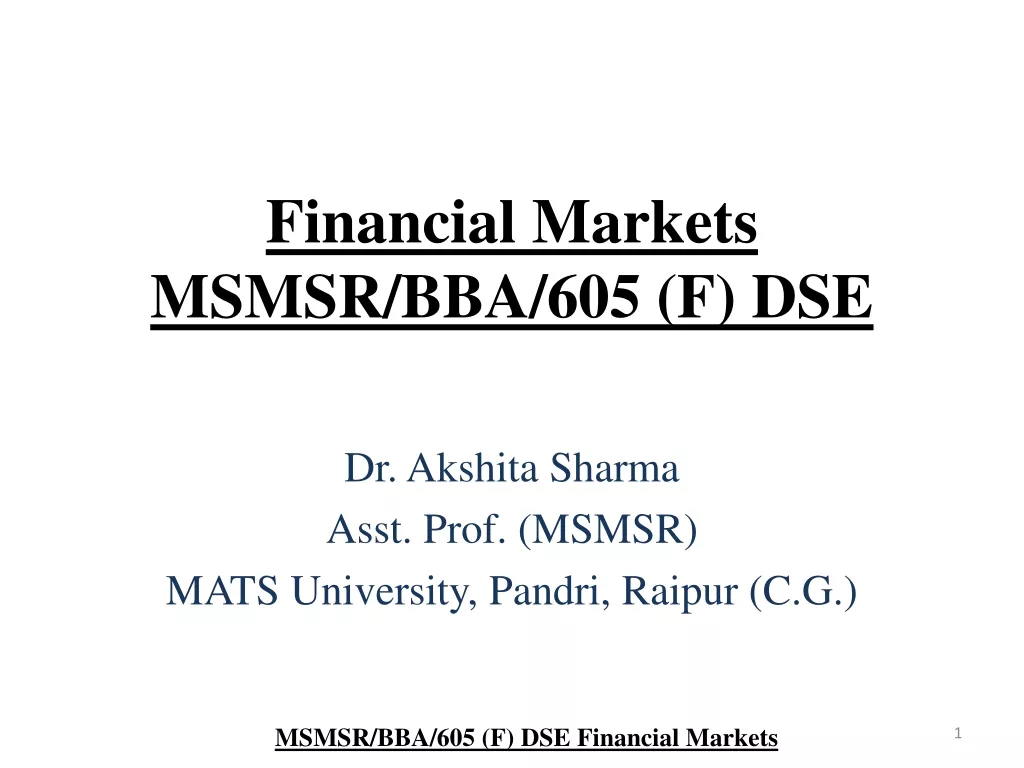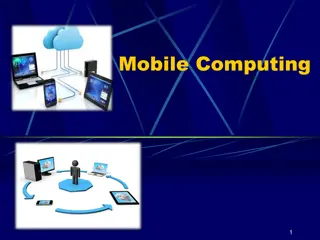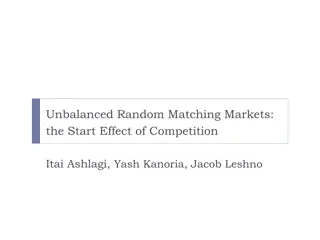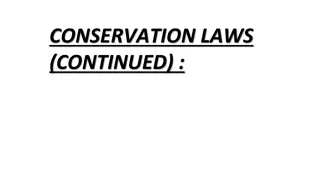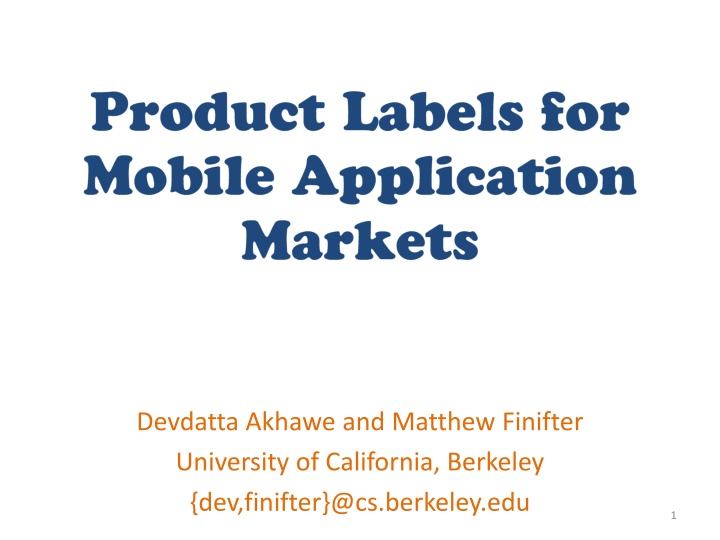
Centralized Mobile Application Markets for Information Symmetry
In centralized mobile application markets, a unique chance exists to address information asymmetry between developers and users. Developers possess critical information regarding quality and security, while users rely on limited indicators like reviews. This gap creates opportunities for market innovation and the establishment of information symmetry through labeling requirements and certifications.
Download Presentation

Please find below an Image/Link to download the presentation.
The content on the website is provided AS IS for your information and personal use only. It may not be sold, licensed, or shared on other websites without obtaining consent from the author. If you encounter any issues during the download, it is possible that the publisher has removed the file from their server.
You are allowed to download the files provided on this website for personal or commercial use, subject to the condition that they are used lawfully. All files are the property of their respective owners.
The content on the website is provided AS IS for your information and personal use only. It may not be sold, licensed, or shared on other websites without obtaining consent from the author.
E N D
Presentation Transcript
Devdatta Akhawe and Matthew Finifter University of California, Berkeley {dev,finifter}@cs.berkeley.edu 1
the centralized nature of mobile application markets affords them a unique opportunity to gather and present information to eliminate information asymmetry 3
Information Asymmetry Lack of understanding between buyer and seller regarding quality of product One party has more or better information than the other Clear asymmetry in mobile application markets Developer knows quality, security, and privacy profile of the product The user only has access to noisy indicators like reviews and ratings 5
so what? 6
Information Asymmetry Developers can t differentiate based on quality/security Differentiation drives innovation Markets thrive with information symmetry E.g., CarFax, Nutritional Labels, Safety Certifications Application markets in a unique position to relieve information asymmetry 7
Unique position of App Markets Complete control of installs/uninstalls: Fantastic position to collect data Also, to enforce labeling requirements Punish mislabeling Often, control the user s device too Modify devices for better data and labels 8
Product Labels Certification Testing and Standards Quantitative Analysis Qualitative Analysis 9
Product Labels Certification Testing and Standards Quantitative Analysis Qualitative Analysis 10
Certification Widely used in the real world: Product Certification (e.g., fireproofing) Professional Certification (e.g., Pilot s license) Certify products for verifiable properties E.g., Accelerometer data is used only locally Encourages developers to participate Complex certifications fetch higher price E.g., DoD willing to pay more for certified confidential apps 11
Product Labels Certification Testing and Standards Quantitative Analysis Qualitative Analysis 12
Testing and Standards Determine suitability for use or compliance to contract E.g., Tensile strength, PCI Independent testing providers who test applications Current comment and reviews are a rudimentary version of this Mobile markets can formalize testing procedures like real world regulators 13
Product Labels Certification Testing and Standards Quantitative Analysis Qualitative Analysis 14
Quantitative Analysis Metrics measured via cardinal numbers Novel metrics possible in application markets E.g., % of users who uninstalled application after (a) viewing permissions (b) using it for 1 day Such feedback based metrics have been impossible in classic markets Control of the end device enables post-hoc metrics for audit of sensor data 15
Product Labels Certification Testing and Standards Quantitative Analysis Qualitative Analysis 17
Qualitative Analysis Cardinal numbers as measured by quantitative analysis might not be useful Quantitative indicators can be bucketed Low/Med/High attack surface Similarly, security/privacy risk of permissions At install point, present other applications with a lower attack surface Or lower uninstalls after sensor data audit 18
issues 19
Issues Sybil Attacks Already a problem in reviews/ratings How and How Well can users consume this information? User studies, A/B tests needed How to combine labels into 1 actionable number? Crowdsourced metrics do not work for targeted attacks Users with such a risk profile should only rely on certifications 20
conclusion 21
the centralized nature of mobile application markets affords them a unique opportunity to gather and present information to eliminate information asymmetry 22
thank you 23

